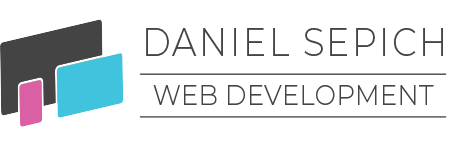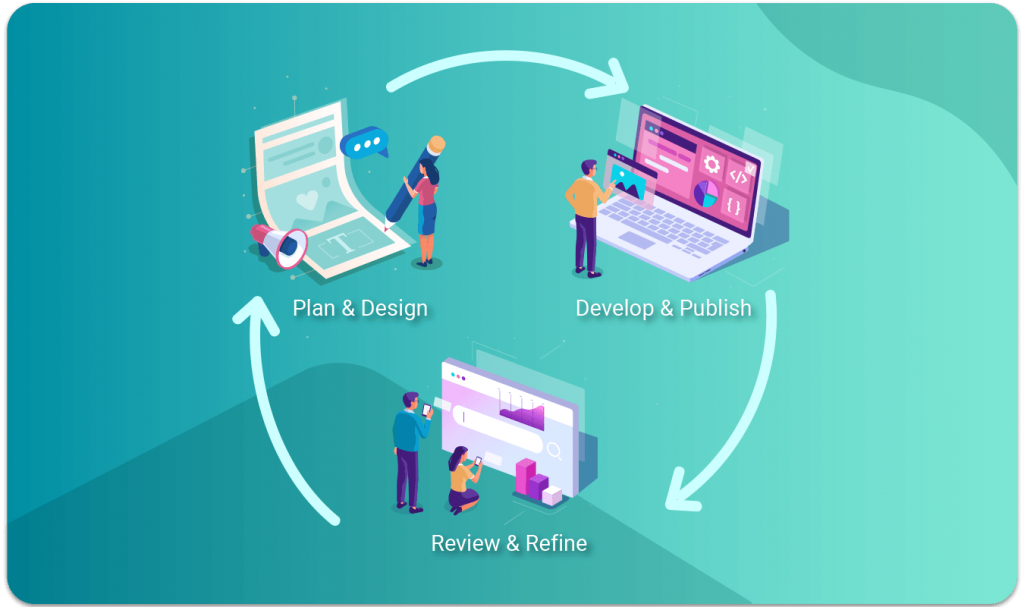Think that other site has the best website design? It’s a good bet they got there in iterations!
What is Iterative Website Design?
Iterative website design is a methodology for accomplishing the big goals of a web project in small achievable pieces. There are many methodologies for working on and managing web projects. You might have heard fancy names like Agile, Kanban, or Scrum. However, there are really just two core approaches that sum up the rest, the waterfall approach and the iterative approach.
The Waterfall Approach
This approach to web development and website design aims to deliver the entire project and ultimate goal in one fell swoop. The term waterfall refers to the final dumping of all the project deliverables and goals at one time. This usually manifests in the big reveal, everything building up to the launch date.
The Iterative Approach
Iterative methods of website design and development projects break up the biggest deliverables and goals into smaller deliverables and goals. The idea is to create many smaller meaningful objectives that can be delivered in iterations. Once all of the iterations are complete, the big project deliverables and goals are fully complete as well yielding the best website design.
Is there really a big difference?
The big difference between these methods is the amount of time it takes to deliver a working piece of the website or a functional piece of code. The iterative approach will deliver a functional website in a small fraction of the time it takes to deliver everything using the waterfall approach. That smaller deliverable won’t fulfill all of the goals in the website plan, but it becomes a foundation to build upon. It allows early access for decision makers to refine their ideas, goals, and objectives. This allows the website owner to actively participate in making the website better from the very early stages of its implementation.
Using the waterfall approach, decision makers may be updated on task completion and may even see some of the completed work for review, however this is in stark contrast to a truly functional subset of the website that they can experience as a visitor using their own web browser.
Websites are inherently iterative!
One of the biggest problems with the waterfall approach to web projects is that the best website design must continually change and improve over time. A big waterfall release sets the wrong mindset for the future of the website. Websites must grow, improve and new content and features must be added over time. Stale websites get ignored by search engines and visitors alike. New content gives past visitors a reason to come back to a website and search engines understand that frequently updated websites are a good indication of a thriving and relevant business.
Overwhelm is a big danger of waterfall methodologies
Humans are inherently better at accomplishing smaller objectives. When goals become very large, even the best of us tend to feel overwhelmed. This is one of the primary reasons we see big projects fail. Long task lists with no end in sight leads to bad practices, excuses and procrastination. When our company picks up projects that have stalled, or have gone long past their deliverable dates, we immediately break them down into smaller more achievable iterations. By taking these projects one small step at a time, we can build momentum with small successes and in no time at all the end goal takes shape.
Perfection is the enemy of success.
– Old Italian Proverb
This aphorism is such a great parallel to the waterfall versus iterative mindset. Aiming for a the best website design that has everything perfect before launch so often results in long delays and in some cases projects that never go live at all. Launch a great website and then make it better and better over time. Do not let the quest for perfection set you up for failure.
At Daniel Sepich Web Development, we exclusively use an iterative approach to all website design and development projects. We strongly encourage planning out frequent deliverables and for our customers to experience their website and provide feedback early and often throughout the implementation process.


